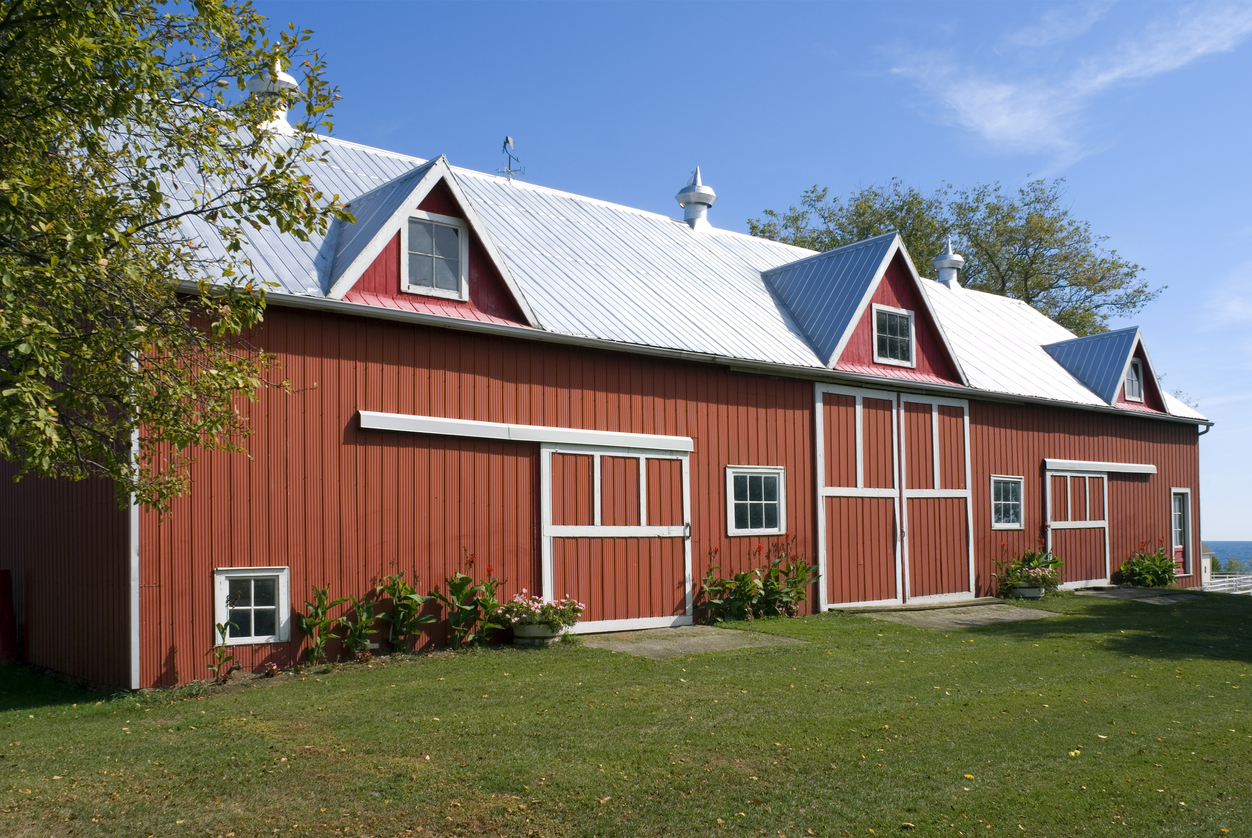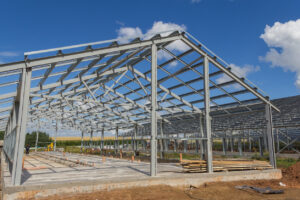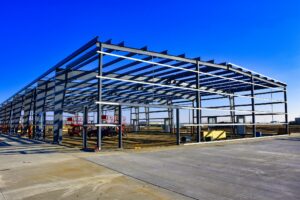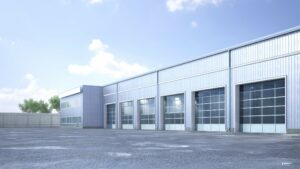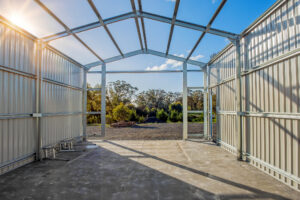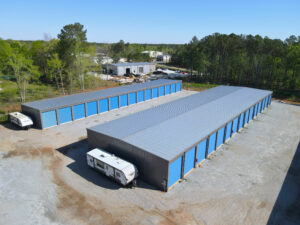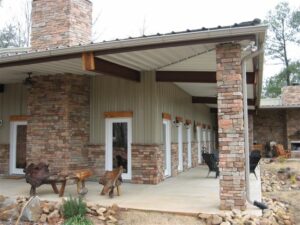Are you pondering on how to build a self storage facility? You aren’t alone. The construction of self-storage facilities have become increasingly popular in recent years as individuals and businesses seek flexible and convenient solutions for their storage needs.
The self-storage industry consists of a combination of large public companies and smaller operators. The top five public companies own 37.6% of self-storage space, while other large and mid-size companies own 22.2%, and smaller, often family-owned businesses control 40.2%.
Whether you’re considering entering the self-storage industry as a business owner or simply interested in understanding how these facilities are built, this comprehensive guide will provide you with the knowledge and insights you need to embark on your self-storage facility construction journey.
Table of Contents
- Understanding the Basics of Self-Storage Facilities
- Planning Your Self-Storage Facility
- Designing Your Self-Storage Facility
- Construction of Your Self-Storage Facility
- Conclusion
- Frequently Asked Questions
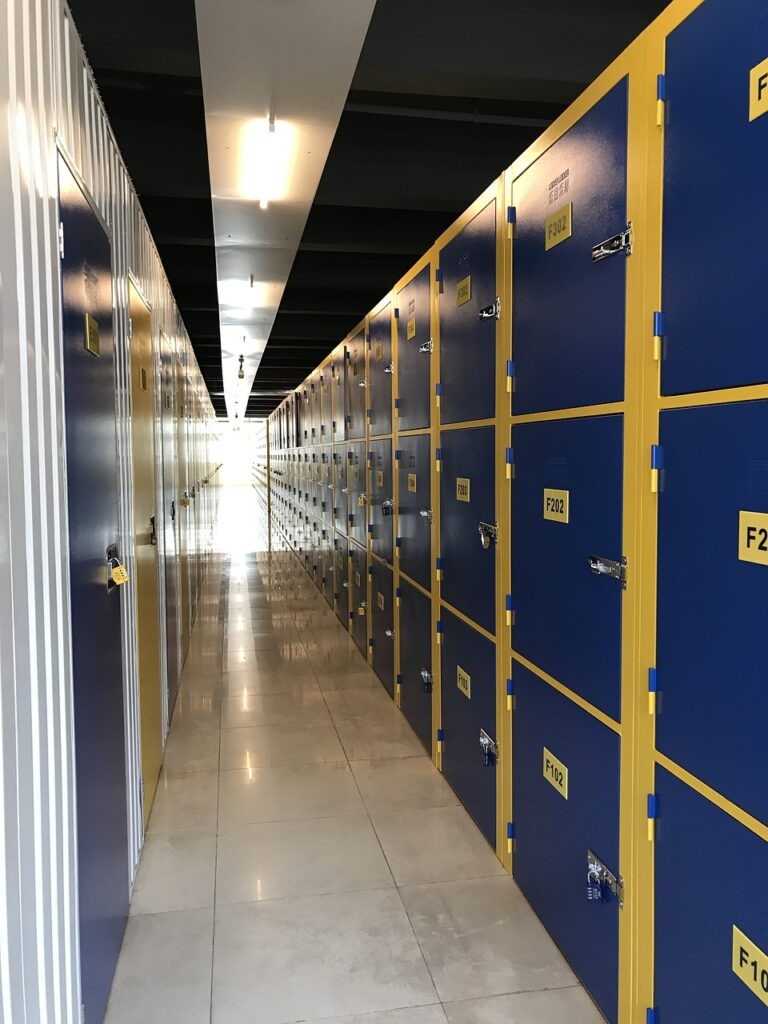
Understanding the Basics of Self-Storage Facilities
To build a successful self-storage facility, it is crucial to first understand the basics of this industry. Let’s explore what a self-storage facility is and why it holds such importance.
What is a Self-Storage Facility?
A self-storage facility is a commercial property equipped with individual storage units that are rented out to tenants on a short-term or long-term basis. These units serve as a secure space for individuals and businesses to store their belongings, providing convenient and accessible storage solutions.
Check out: Your Guide To Mini Storage Buildings
Self-storage facilities are designed to cater to a wide range of storage needs, from household items to business inventory. The units come in various sizes, offering flexibility for customers to choose the space that best fits their requirements.
Additionally, modern self-storage facilities are equipped with state-of-the-art security features such as surveillance cameras, gated access, and individual unit alarms to ensure the safety of stored items.
Importance of Self-Storage Facilities
Self-storage facilities play a vital role in today’s society by offering myriad benefits to their users. Individuals and businesses utilize these facilities for various reasons, including:
- Temporary storage during a move or renovation
- Storing seasonal items, such as holiday decorations or sports equipment
- Business inventory storage
- Document and record-keeping
Now that we have established the foundation, let’s move on to planning your self-storage facility.
When considering the location of your self-storage facility, it is important to assess the surrounding area and demographics to ensure a steady flow of potential customers. Proximity to residential neighborhoods, commercial districts, or university campuses can significantly impact the demand for storage units.
Conducting a thorough market analysis can help you identify the optimal location that aligns with your target market’s needs.
Planning Your Self-Storage Facility
Before diving into the construction process, careful planning is essential to ensure the success of your self-storage facility. Let’s explore the key considerations you need to address during this stage.
Establishing a successful self-storage facility requires a strategic approach that encompasses various aspects beyond just the physical construction. From market research to legal compliance, each step plays a crucial role in shaping the future of your business.
Check out: Breaking Down The Cost To Build Self-Storage Facilities
Choosing the Right Location
The location of your self-storage facility is critical to attracting customers and maximizing profitability. Consider factors such as proximity to residential areas, accessibility from major roads, and competition in the area.
Conducting a thorough market analysis will help you identify a location with strong demand and potential for growth.
Furthermore, understanding the demographic profile of the area can provide valuable insights into the type of storage solutions that would be most in demand.
For example, an area with a high population of young professionals may require smaller units for temporary storage needs, while a suburban location might benefit from larger units for families in transition.
Determining the Size and Layout
Next, you need to determine the size and layout of your self-storage facility. This involves deciding on the number and dimensions of storage units, as well as any additional features such as climate-controlled rooms or vehicle storage.
Consider the market demand in your target area and strike a balance between meeting customer needs and optimizing your facility’s revenue potential.
Moreover, incorporating flexible storage options that cater to a diverse range of customers can set your facility apart from competitors. Offering customizable unit sizes or specialized storage solutions for unique items like wine collections or recreational vehicles can attract niche markets and boost your facility’s appeal.
Pro tip:
Prioritize a mix of unit sizes based on market demand, but don’t forget to include a healthy percentage of the ever-popular 10×10 unit. This unit size is the most versatile and appeals to the widest range of customers, from individuals storing seasonal items to small businesses needing extra inventory space.
Legal and Zoning Considerations
Building a self-storage facility involves navigating various legal and zoning requirements. Consult with local authorities to understand the specific regulations and obtain the necessary permits for your project.
Ensure compliance with building codes, fire safety regulations, and any environmental regulations that may apply.
Additionally, engaging with the community and addressing any concerns or objections early in the planning process can help build positive relationships and mitigate potential roadblocks during the development phase.
By proactively addressing legal and zoning considerations, you can establish a solid foundation for your self-storage facility’s long-term success.
Designing Your Self-Storage Facility
Once you have completed the planning phase, it’s time to design your self-storage facility. Paying attention to architectural considerations, security features, and amenities will enhance the functionality and appeal of your facility.
Designing a self-storage facility involves a meticulous process that goes beyond just creating storage units. It requires a keen eye for detail and a focus on maximizing both space and efficiency.
Collaborating with an experienced architect is essential to ensure that the facility is not only visually appealing but also structurally sound.
Architectural Considerations
Collaborate with an experienced architect to design a facility that optimizes available space and provides efficient access to storage units. Consider factors such as building materials, drainage systems, and traffic flow within the facility. A well-designed layout will enhance customer experience and operational efficiency.
When considering architectural elements, think about the aesthetic appeal of the facility, as well. Incorporating modern design elements and landscaping can elevate the overall look of the property, making it more attractive to potential customers.
SteelCo dropships self-storage building materials nationwide while sticking to your project timelines effectively. Our team of industry experts in design, sales, and project management ensures that your virtual plans and designs are brought to reality just as imagined. Learn more about our comprehensive services.
Security Features to Include
Security is a top priority in the self-storage industry, and incorporating robust security features into your facility is crucial. Install surveillance systems, access control systems, and reliable locking mechanisms to ensure the safety and peace of mind of your tenants.
Additionally, consider implementing perimeter fencing and well-lit areas to further enhance security measures.
Providing a safe and secure environment will not only protect your tenants’ belongings but also build trust and loyalty among your customer base.
Climate Control and Other Amenities
Offering climate-controlled storage units can attract customers looking to store delicate items or belongings sensitive to temperature and humidity.
Additionally, consider including amenities such as well-maintained driveways, ample parking spaces, and on-site management offices to enhance the overall customer experience.
Investing in amenities like online payment options and 24-hour access can also set your facility apart from competitors and cater to the diverse needs of your tenants.
By prioritizing both security and convenience, you can create a self-storage facility that not only meets but exceeds customer expectations.
Construction of Your Self-Storage Facility
With the planning and design phases completed, it’s time to bring your self-storage facility to life. From hiring a construction team to overseeing the building process, there are several essential steps to follow.
Hiring a Construction Team
Enlist the services of a reputable construction team experienced in building self-storage facilities. Ensure they are well-versed in the specific requirements of these facilities and capable of delivering a high-quality project within the allocated budget and timeline.
When selecting a construction team, consider their track record and expertise in constructing self-storage facilities.
Look for teams that have completed similar projects in the past, as this demonstrates their ability to handle the unique challenges that come with building storage facilities.
Additionally, inquire about their understanding of local building codes and regulations to ensure compliance throughout the construction process.
Construction Materials and Techniques
Choose construction materials and techniques that prioritize durability, security, and energy efficiency. Working closely with your construction team, select materials that can withstand the wear and tear of daily use, protect the stored items, and contribute to the overall longevity of your facility.
Consider using materials such as reinforced concrete for the building’s structure, as it provides excellent strength and durability.
For the exterior, opt for weather-resistant cladding that not only enhances the aesthetic appeal of your facility but also protects it from the elements.
Additionally, invest in high-quality security systems, including surveillance cameras, access control systems, and secure locks, to ensure the safety of your tenants’ belongings.
Check out: Blueprints For Success: Self Storage Building Plans
Overseeing the Construction Process
Throughout the construction process, it is crucial to monitor progress, address any issues that may arise, and maintain effective communication with your construction team.
Regular site visits, progress meetings, and inspections will help ensure that the project is executed according to plan and meets your quality standards.
During site visits, pay attention to the construction timeline and make sure that the project is progressing as scheduled. Address any concerns promptly to avoid delays and ensure that the construction team has the necessary resources to complete the project efficiently.
Regular progress meetings with the construction team will allow you to stay informed about the project’s status and address any potential challenges that may arise.
Furthermore, conducting thorough inspections at various stages of the construction process will help identify any potential issues early on. This will allow for timely resolutions and prevent costly rework in the future.
By actively overseeing the construction process, you can ensure that your self-storage facility is built to the highest standards of quality and functionality.
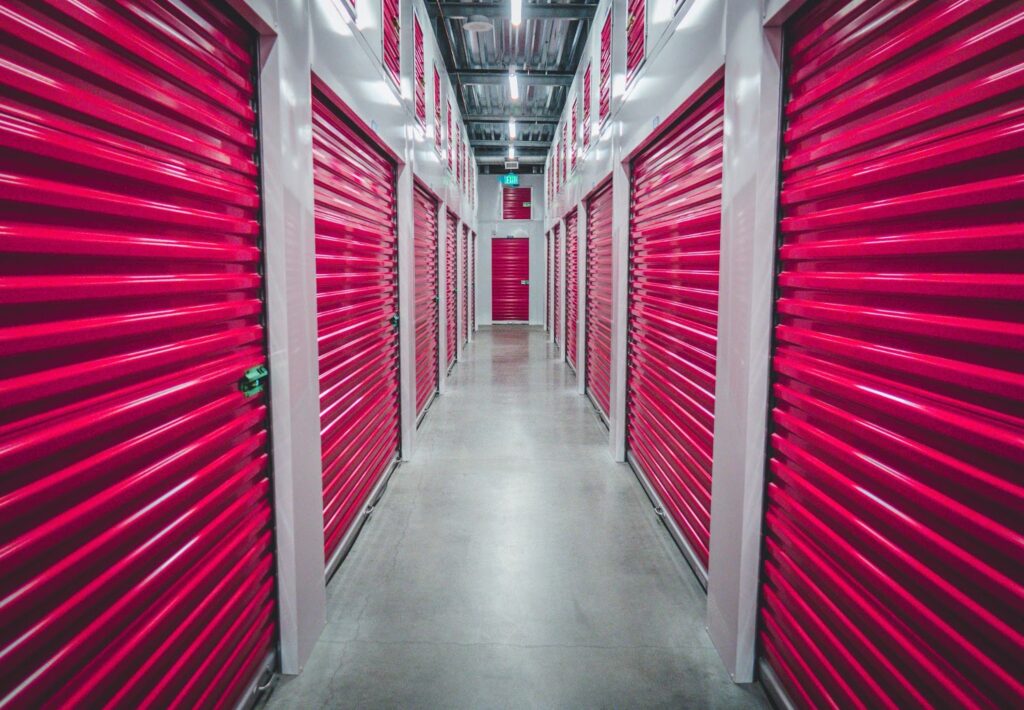
Conclusion
Building a self-storage facility requires careful planning, thoughtful design, and efficient construction.
By understanding the basics of self-storage facilities, planning your facility meticulously, and executing a well-designed construction process, you can create a successful and profitable self-storage facility that meets the growing demands of individuals and businesses.
Remember, always prioritize the needs and security of your tenants to foster long-term relationships and ensure the success of your business venture.
SteelCo has been dropshipping pre-engineered metal building (PEMB) materials nationwide for over 23 years. We work with suppliers who adhere to the standards set by MBMA, AISC, and AISI and deliver only the highest-quality materials customized to meet your unique requirements and local building codes. Learn more about our self-storage buildings.
We also offer commercial construction services in Georgia for a wide range of building and client industry types.
————————————————-
Frequently Asked Questions
What’s the average size of a self storage facility?
The average size of a self-storage facility in the US is approximately 56,900 square feet. This size is slightly larger than a football field, providing a substantial amount of space for storage units of various sizes to accommodate the needs of different customers.
What’s the recommended dimension for a self storage unit?
The recommended dimensions for self-storage units can vary depending on the specific needs of customers and the types of items they wish to store.
- 5’ x 5’ Unit: This size suits personal items, seasonal decorations, or off-season clothing.
- 5’ x 10’ Unit: It can accommodate furniture from a one-bedroom apartment or dorm room, including a queen-sized mattress set, a love seat, a dresser, a TV, a bike, and storage boxes.
- 10’ x 10’ Unit: This is a medium-sized unit. It can comfortably fit the contents of a two-bedroom apartment, including mattresses, dressers, a sofa, chairs, a coffee table, and bookshelves.
Which state is best for building a self storage?
Consider states like Texas, Florida, Arizona, and North Carolina when investing in self-storage facilities. These states offer favorable economic conditions, population growth, and demand for storage space. Texas, with its diverse economy, leads in the number of self-storage facilities, while Florida’s population growth drives demand. Arizona provides tax incentives, and North Carolina has strong fundamentals for investment. Choose wisely based on location, demographics, and local demand.
What’s the best location for a self storage facility?
Building a self-storage facility can indeed be a profitable venture. The profitability of a self-storage business is often considered higher than many other types of real estate investments. The average annual ROI for self-storage units ranges between 8% and 12%, which is quite favorable compared to other types of investments.









